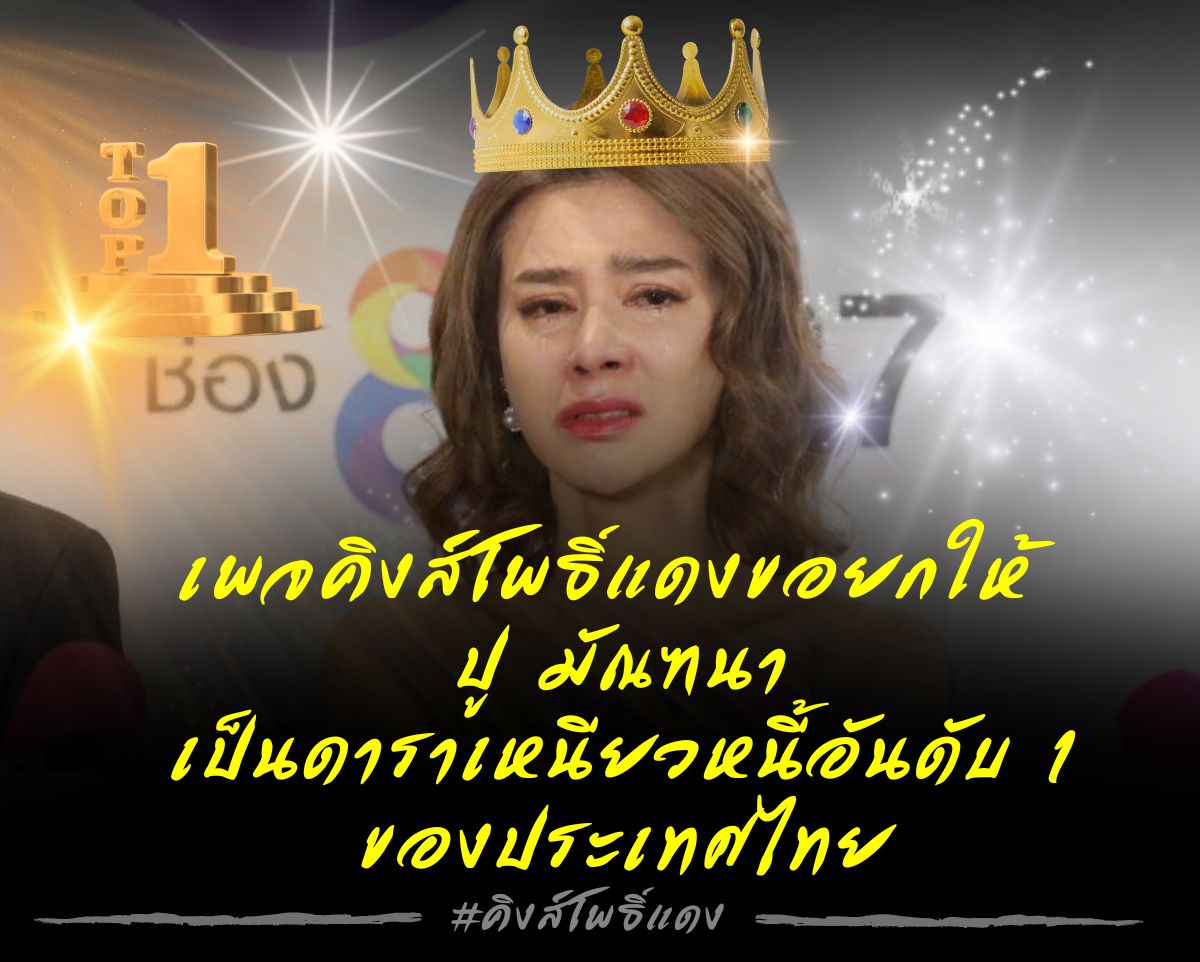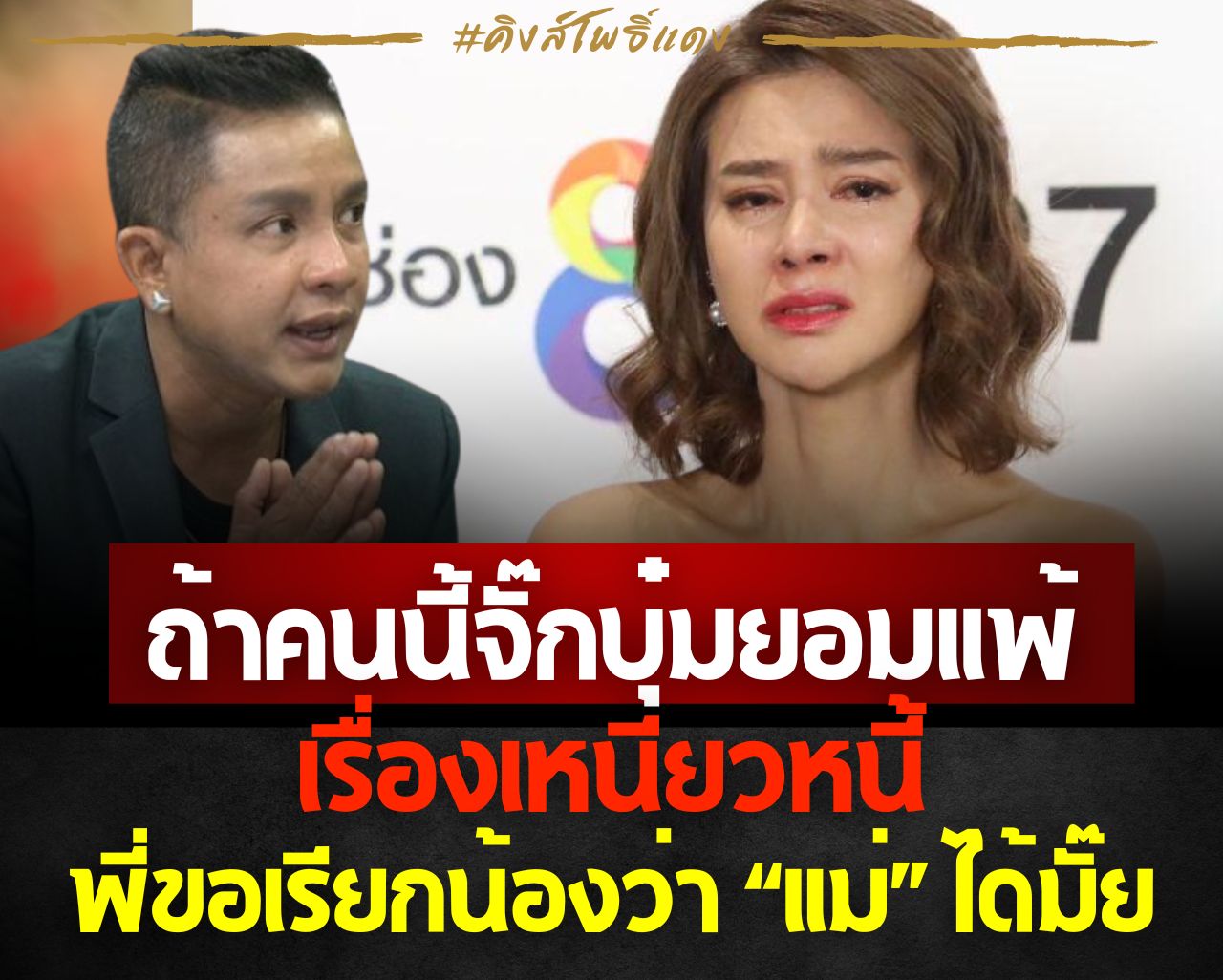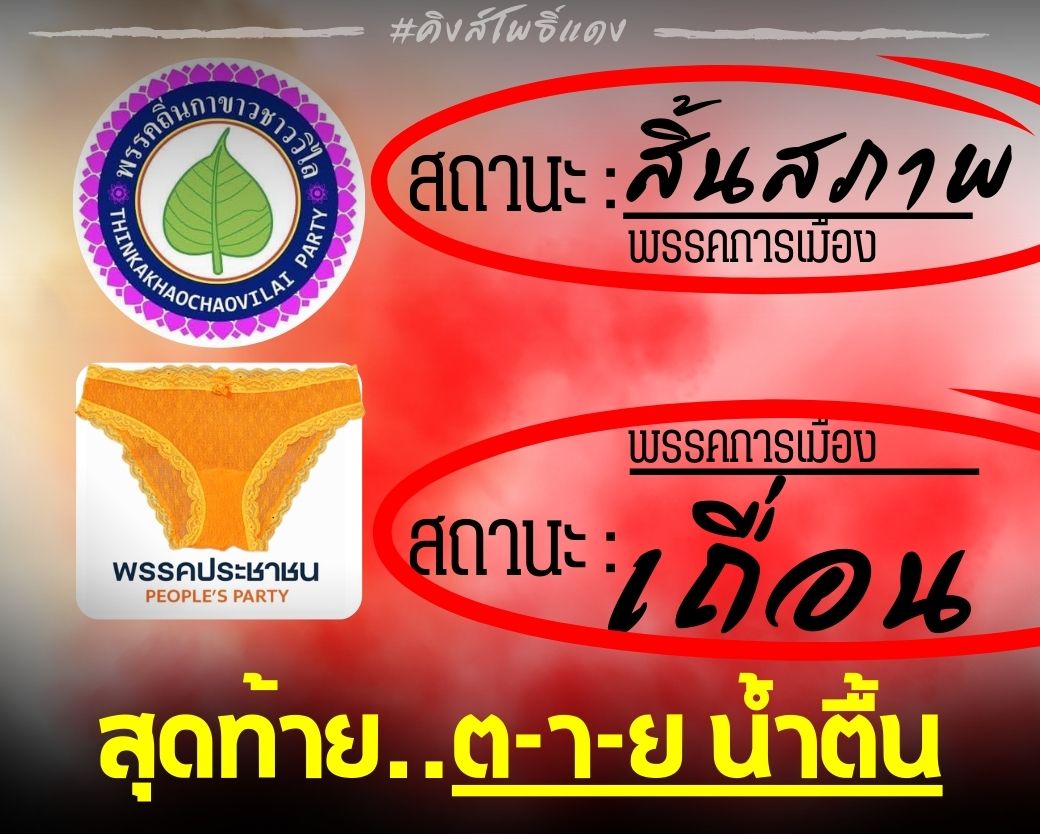ไปทั้งยวง! ศาลรัฐธรรมนูญเสียงข้างมาก 5 ต่อ 4 มีคำวินิจฉัยนายกฯ “เศรษฐา ทวีสิน” แต่งตั้งนาย “พิชิต ชื่นบาน” เป็นรัฐมนตรีประจำสำนักนายกฯ เป็นการกระทำที่ผิดมาตรฐานจริยธรรมร้ายแรง อันเป็นลักษณะต้องห้าม ต้องพ้นจากตำแหน่งนายกรัฐมนตรี และมีผลให้รัฐมนตรีพ้นตำแหน่งทั้งคณะ
.
14 สิงหาคม 2567- คณะตุลาการศาลรัฐธรรมนูญนัดแถลงด้วยวาจา ประชุมปรึกษาหารือ ลงมติและออกนั่งบัลลังก์อ่านคำวินิจฉัยในคดีที่ประธานวุฒิสภาส่งคำร้องของสมาชิกวุฒิสภาจำนวน 40 คนขอให้ศาลรัฐธรรมนูญวินิจฉัยตามรัฐธรรมนูญมาตรา 170 วรรคสาม ประกอบมาตรา 82 ว่าความเป็นรัฐมนตรีของนายเศรษฐา ทวีสิน นายกรัฐมนตรี สิ้นสุดลงเฉพาะตัวตามรัฐธรรมนูญมาตรา 170 วรรคหนึ่ง (4)ประกอบมาตรา 160 (4) และ (5 )หรือไม่ จากกรณีนายเศรษฐาได้นำความกราบบังคมทูลเพื่อโปรดเกล้าฯ แต่งตั้งนายพิชิต ชื่นบาน เป็นรัฐมนตรีประจำสำนักนายกรัฐมนตรี ทั้งที่รู้หรือควรรู้อยู่แล้วว่านายพิชิตขาดคุณสมบัติหรือมีลักษณะต้องห้ามตามรัฐธรรมนูญ เนื่องจากเคยถูกศาลฎีกามีคำสั่งจำคุกเป็นเวลา 6 เดือนเมื่อปี 2551 ในความผิดฐานละเมิดอำนาจศาล เป็นบุคคลที่กระทำการอันไม่ซื่อสัตย์สุจริตและมีพฤติกรรมอันเป็นการฝ่าฝืนหรือไม่ปฏิบัติตามมาตรฐานทางจริยธรรมอย่างร้ายแรง อันเป็นเหตุให้ความเป็นรัฐมนตรีของนายเศรษฐาสิ้นสุดลงได้
.
โดยในเวลา 09.30 น.วันนี้ ศาลได้เริ่มประชุมแถลงด้วยวาจา ลงมติ และจัดทำคำวินิจฉัย หลังจากนั้นได้ออกนั่งบัลลังก์อ่านคำวินิจฉัยให้คู่กรณีฟังในเวลา 15.00 น.
.
คดีนี้ประเด็นที่ศาลได้วินิจฉัยคือการที่นายเศรษฐานำความกราบบังคมทูลเพื่อโปรดเกล้าแต่งตั้งนายพิชิต ชื่นบาน เป็นรัฐมนตรีประจำสำนักนายกรัฐมนตรีนั้น นายเศรษฐา รู้หรือควรรู้ มีเจตนาหรือไม่ ที่เสนอชื่อนายพิชิตซึ่งศาลฎีกาเคยมีคำสั่งจำคุก 6 เดือนฐานะละเมิดอำนาจศาล ขึ้นดำรงตำแหน่งรัฐมนตรี
.
ทั้งนี้ ศาลฯ มีคำวินิจฉัยว่าการกระทำดังกล่าวของนายเศรษฐา เข้าข่ายฝ่าฝืนไม่ปฏิบัติตามมาตรฐานจริยธรรมอย่างร้ายแรง ทำให้ความเป็นรัฐมนตรีของนายเศรษฐาสิ้นสุดลงเฉพาะตัว โดยมีผลให้คณะรัฐมนตรีทั้งคณะพ้นจากตำแหน่งไปด้วย
.
โดยในวันนี้ นายเศรษฐา ได้ส่ง นพ.พรหมินทร์ เลิศสุริย์เดช เลขาธิการนายกรัฐมนตรีเป็นตัวแทนมาฟังคำวินิจฉัย
.
สำหรับคดีนี้ศาลรัฐธรรมนูญมีมติ 6 ต่อ 3 รับคำร้องไว้พิจารณาวินิจฉัยเมื่อวันที่ 23 พ.ค.67 โดยตุลาการเสียงข้างน้อยที่เห็นว่าไม่ควรรับคำร้องไว้ประกอบด้วย นายนครินทร์ เมฆไตรรัตน์ ประธานศาลรัฐธรรมนูญ นายอุดม รัฐอมฤต และนายสุเมธ รอยกุลเจริญ
.
และมีมติเสียงข้างมาก 5 ต่อ 4 ไม่สั่งนายเศรษฐาหยุดปฏิบัติหน้าที่นายกฯ โดยตุลาการศาลรัฐธรรมนูญเสียงข้างน้อย ที่เห็นว่านายกฯ ควรหยุดปฏิบัติหน้าที่ ประกอบด้วย นายปัญญา อุดชาชน, นายอุดม สิทธิวิรัชธรรม, นายวิรุฬห์ แสงเทียน และนายจิรนิติ หะวานนท์ หลังจากนั้นศาลได้เปิดให้คู่กรณียื่นคำชี้แจงแก้ข้อกล่าวหา และแถลงปิดคดีรวมระยะเวลาการพิจารณานับรับคำร้องจนถึงวินิจฉัยรวม 2 เดือนเศษ
.............
ที่มา : Sondhi X
#Thaitimes
.
14 สิงหาคม 2567- คณะตุลาการศาลรัฐธรรมนูญนัดแถลงด้วยวาจา ประชุมปรึกษาหารือ ลงมติและออกนั่งบัลลังก์อ่านคำวินิจฉัยในคดีที่ประธานวุฒิสภาส่งคำร้องของสมาชิกวุฒิสภาจำนวน 40 คนขอให้ศาลรัฐธรรมนูญวินิจฉัยตามรัฐธรรมนูญมาตรา 170 วรรคสาม ประกอบมาตรา 82 ว่าความเป็นรัฐมนตรีของนายเศรษฐา ทวีสิน นายกรัฐมนตรี สิ้นสุดลงเฉพาะตัวตามรัฐธรรมนูญมาตรา 170 วรรคหนึ่ง (4)ประกอบมาตรา 160 (4) และ (5 )หรือไม่ จากกรณีนายเศรษฐาได้นำความกราบบังคมทูลเพื่อโปรดเกล้าฯ แต่งตั้งนายพิชิต ชื่นบาน เป็นรัฐมนตรีประจำสำนักนายกรัฐมนตรี ทั้งที่รู้หรือควรรู้อยู่แล้วว่านายพิชิตขาดคุณสมบัติหรือมีลักษณะต้องห้ามตามรัฐธรรมนูญ เนื่องจากเคยถูกศาลฎีกามีคำสั่งจำคุกเป็นเวลา 6 เดือนเมื่อปี 2551 ในความผิดฐานละเมิดอำนาจศาล เป็นบุคคลที่กระทำการอันไม่ซื่อสัตย์สุจริตและมีพฤติกรรมอันเป็นการฝ่าฝืนหรือไม่ปฏิบัติตามมาตรฐานทางจริยธรรมอย่างร้ายแรง อันเป็นเหตุให้ความเป็นรัฐมนตรีของนายเศรษฐาสิ้นสุดลงได้
.
โดยในเวลา 09.30 น.วันนี้ ศาลได้เริ่มประชุมแถลงด้วยวาจา ลงมติ และจัดทำคำวินิจฉัย หลังจากนั้นได้ออกนั่งบัลลังก์อ่านคำวินิจฉัยให้คู่กรณีฟังในเวลา 15.00 น.
.
คดีนี้ประเด็นที่ศาลได้วินิจฉัยคือการที่นายเศรษฐานำความกราบบังคมทูลเพื่อโปรดเกล้าแต่งตั้งนายพิชิต ชื่นบาน เป็นรัฐมนตรีประจำสำนักนายกรัฐมนตรีนั้น นายเศรษฐา รู้หรือควรรู้ มีเจตนาหรือไม่ ที่เสนอชื่อนายพิชิตซึ่งศาลฎีกาเคยมีคำสั่งจำคุก 6 เดือนฐานะละเมิดอำนาจศาล ขึ้นดำรงตำแหน่งรัฐมนตรี
.
ทั้งนี้ ศาลฯ มีคำวินิจฉัยว่าการกระทำดังกล่าวของนายเศรษฐา เข้าข่ายฝ่าฝืนไม่ปฏิบัติตามมาตรฐานจริยธรรมอย่างร้ายแรง ทำให้ความเป็นรัฐมนตรีของนายเศรษฐาสิ้นสุดลงเฉพาะตัว โดยมีผลให้คณะรัฐมนตรีทั้งคณะพ้นจากตำแหน่งไปด้วย
.
โดยในวันนี้ นายเศรษฐา ได้ส่ง นพ.พรหมินทร์ เลิศสุริย์เดช เลขาธิการนายกรัฐมนตรีเป็นตัวแทนมาฟังคำวินิจฉัย
.
สำหรับคดีนี้ศาลรัฐธรรมนูญมีมติ 6 ต่อ 3 รับคำร้องไว้พิจารณาวินิจฉัยเมื่อวันที่ 23 พ.ค.67 โดยตุลาการเสียงข้างน้อยที่เห็นว่าไม่ควรรับคำร้องไว้ประกอบด้วย นายนครินทร์ เมฆไตรรัตน์ ประธานศาลรัฐธรรมนูญ นายอุดม รัฐอมฤต และนายสุเมธ รอยกุลเจริญ
.
และมีมติเสียงข้างมาก 5 ต่อ 4 ไม่สั่งนายเศรษฐาหยุดปฏิบัติหน้าที่นายกฯ โดยตุลาการศาลรัฐธรรมนูญเสียงข้างน้อย ที่เห็นว่านายกฯ ควรหยุดปฏิบัติหน้าที่ ประกอบด้วย นายปัญญา อุดชาชน, นายอุดม สิทธิวิรัชธรรม, นายวิรุฬห์ แสงเทียน และนายจิรนิติ หะวานนท์ หลังจากนั้นศาลได้เปิดให้คู่กรณียื่นคำชี้แจงแก้ข้อกล่าวหา และแถลงปิดคดีรวมระยะเวลาการพิจารณานับรับคำร้องจนถึงวินิจฉัยรวม 2 เดือนเศษ
.............
ที่มา : Sondhi X
#Thaitimes
ไปทั้งยวง! ศาลรัฐธรรมนูญเสียงข้างมาก 5 ต่อ 4 มีคำวินิจฉัยนายกฯ “เศรษฐา ทวีสิน” แต่งตั้งนาย “พิชิต ชื่นบาน” เป็นรัฐมนตรีประจำสำนักนายกฯ เป็นการกระทำที่ผิดมาตรฐานจริยธรรมร้ายแรง อันเป็นลักษณะต้องห้าม ต้องพ้นจากตำแหน่งนายกรัฐมนตรี และมีผลให้รัฐมนตรีพ้นตำแหน่งทั้งคณะ
.
14 สิงหาคม 2567- คณะตุลาการศาลรัฐธรรมนูญนัดแถลงด้วยวาจา ประชุมปรึกษาหารือ ลงมติและออกนั่งบัลลังก์อ่านคำวินิจฉัยในคดีที่ประธานวุฒิสภาส่งคำร้องของสมาชิกวุฒิสภาจำนวน 40 คนขอให้ศาลรัฐธรรมนูญวินิจฉัยตามรัฐธรรมนูญมาตรา 170 วรรคสาม ประกอบมาตรา 82 ว่าความเป็นรัฐมนตรีของนายเศรษฐา ทวีสิน นายกรัฐมนตรี สิ้นสุดลงเฉพาะตัวตามรัฐธรรมนูญมาตรา 170 วรรคหนึ่ง (4)ประกอบมาตรา 160 (4) และ (5 )หรือไม่ จากกรณีนายเศรษฐาได้นำความกราบบังคมทูลเพื่อโปรดเกล้าฯ แต่งตั้งนายพิชิต ชื่นบาน เป็นรัฐมนตรีประจำสำนักนายกรัฐมนตรี ทั้งที่รู้หรือควรรู้อยู่แล้วว่านายพิชิตขาดคุณสมบัติหรือมีลักษณะต้องห้ามตามรัฐธรรมนูญ เนื่องจากเคยถูกศาลฎีกามีคำสั่งจำคุกเป็นเวลา 6 เดือนเมื่อปี 2551 ในความผิดฐานละเมิดอำนาจศาล เป็นบุคคลที่กระทำการอันไม่ซื่อสัตย์สุจริตและมีพฤติกรรมอันเป็นการฝ่าฝืนหรือไม่ปฏิบัติตามมาตรฐานทางจริยธรรมอย่างร้ายแรง อันเป็นเหตุให้ความเป็นรัฐมนตรีของนายเศรษฐาสิ้นสุดลงได้
.
โดยในเวลา 09.30 น.วันนี้ ศาลได้เริ่มประชุมแถลงด้วยวาจา ลงมติ และจัดทำคำวินิจฉัย หลังจากนั้นได้ออกนั่งบัลลังก์อ่านคำวินิจฉัยให้คู่กรณีฟังในเวลา 15.00 น.
.
คดีนี้ประเด็นที่ศาลได้วินิจฉัยคือการที่นายเศรษฐานำความกราบบังคมทูลเพื่อโปรดเกล้าแต่งตั้งนายพิชิต ชื่นบาน เป็นรัฐมนตรีประจำสำนักนายกรัฐมนตรีนั้น นายเศรษฐา รู้หรือควรรู้ มีเจตนาหรือไม่ ที่เสนอชื่อนายพิชิตซึ่งศาลฎีกาเคยมีคำสั่งจำคุก 6 เดือนฐานะละเมิดอำนาจศาล ขึ้นดำรงตำแหน่งรัฐมนตรี
.
ทั้งนี้ ศาลฯ มีคำวินิจฉัยว่าการกระทำดังกล่าวของนายเศรษฐา เข้าข่ายฝ่าฝืนไม่ปฏิบัติตามมาตรฐานจริยธรรมอย่างร้ายแรง ทำให้ความเป็นรัฐมนตรีของนายเศรษฐาสิ้นสุดลงเฉพาะตัว โดยมีผลให้คณะรัฐมนตรีทั้งคณะพ้นจากตำแหน่งไปด้วย
.
โดยในวันนี้ นายเศรษฐา ได้ส่ง นพ.พรหมินทร์ เลิศสุริย์เดช เลขาธิการนายกรัฐมนตรีเป็นตัวแทนมาฟังคำวินิจฉัย
.
สำหรับคดีนี้ศาลรัฐธรรมนูญมีมติ 6 ต่อ 3 รับคำร้องไว้พิจารณาวินิจฉัยเมื่อวันที่ 23 พ.ค.67 โดยตุลาการเสียงข้างน้อยที่เห็นว่าไม่ควรรับคำร้องไว้ประกอบด้วย นายนครินทร์ เมฆไตรรัตน์ ประธานศาลรัฐธรรมนูญ นายอุดม รัฐอมฤต และนายสุเมธ รอยกุลเจริญ
.
และมีมติเสียงข้างมาก 5 ต่อ 4 ไม่สั่งนายเศรษฐาหยุดปฏิบัติหน้าที่นายกฯ โดยตุลาการศาลรัฐธรรมนูญเสียงข้างน้อย ที่เห็นว่านายกฯ ควรหยุดปฏิบัติหน้าที่ ประกอบด้วย นายปัญญา อุดชาชน, นายอุดม สิทธิวิรัชธรรม, นายวิรุฬห์ แสงเทียน และนายจิรนิติ หะวานนท์ หลังจากนั้นศาลได้เปิดให้คู่กรณียื่นคำชี้แจงแก้ข้อกล่าวหา และแถลงปิดคดีรวมระยะเวลาการพิจารณานับรับคำร้องจนถึงวินิจฉัยรวม 2 เดือนเศษ
.............
ที่มา : Sondhi X
#Thaitimes
1 ความคิดเห็น
0 การแบ่งปัน
1017 มุมมอง
0 รีวิว

















